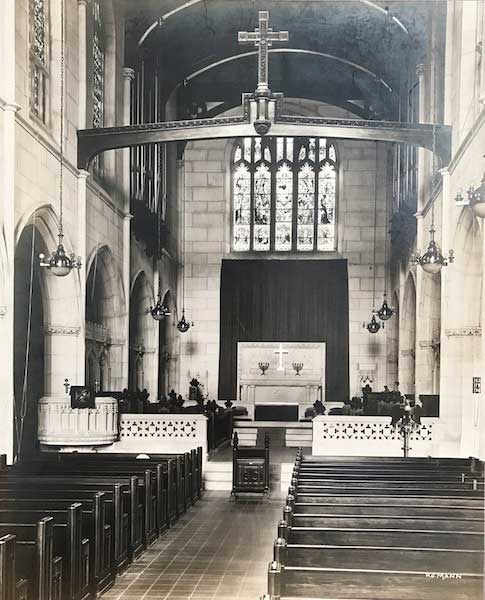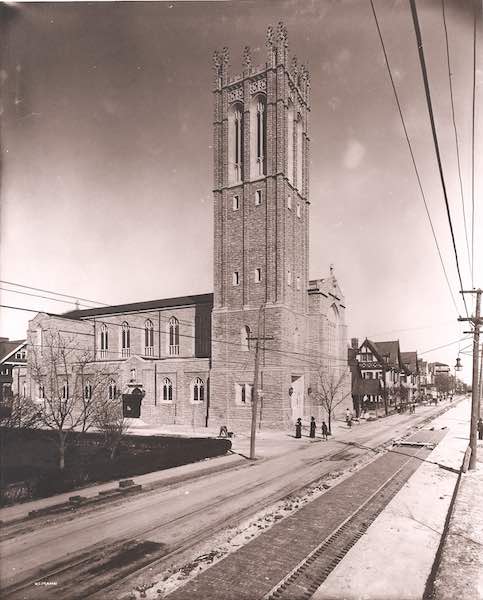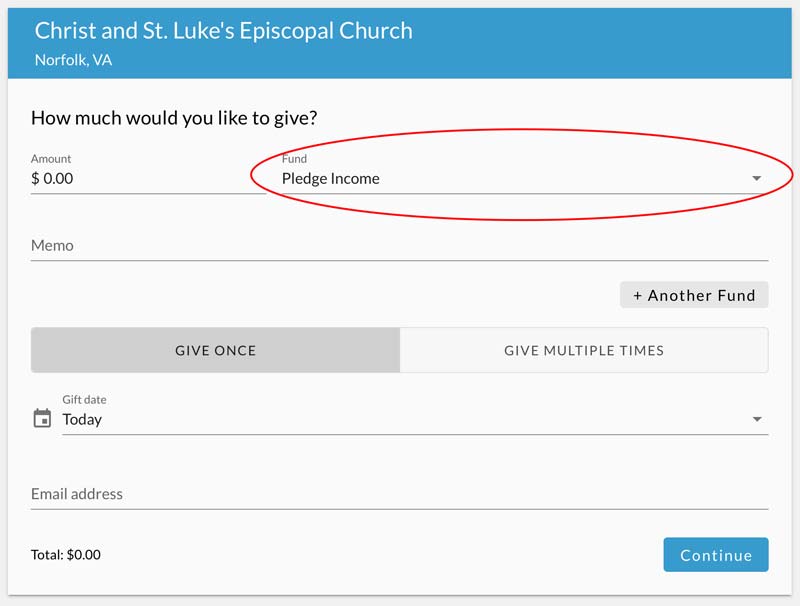Our Early Beginnings
Christ & St. Luke’s Episcopal Church houses a body of Christians documented as the continuing congregation of the Elizabeth River Parish established in the late 1630s by English people in the area now known as Norfolk. Our Church banner is dated 1637.
The location of the first two Borough Churches isn’t known, but the 1739 building at the corner of St. Paul’s and City Hall Avenues was abandoned in 1800 when the congregation moved across the street to their new building. When it was destroyed by fire in 1826, Christ Church then moved to a building on Freemason Street. From this background a second parish was formed in 1832 and the Vestry of Christ Church authorized them to refurbish the old Borough Church and it was named “Saint Paul’s.” This parish continues in operation today.
In 1872 a third parish, Saint Luke’s was created. As Norfolk grew, other Episcopal parishes were formed. In 1909 Christ Church decided to move to the new suburb of Ghent and laid dual cornerstones for the current building on October 28, 1909, the feast of St. Simon & St. Jude. The cornerstones honor the history of the church. The one on the left was for the 1909 church while the one of the right had served as the cornerstone in the 1800 and 1827 churches. Opening services were held on Christmas Day, 1910.
The beautiful church is in the Early English Perpendicular Gothic style and is on the National Historic Register. The bell tower houses the oldest bell in Norfolk and can be seen from all across Ghent and across the water in Portsmouth.
Overcoming Difficulty Together
In 1912 Saint Andrew’s was established as a sister church to serve the neighborhood of West Ghent. St. Luke’s had built a magnificent building on Granby Street (currently the location of the Federal Courts) but it was destroyed by a lightning fire in 1921, and they moved to Colonial Avenue.
A fire severely damaged Christ Church in November, 1914, but the church immediately began repairs, meeting in movie theaters and other churches and synagogues in the area, and rededicated the building on Easter Day, 1915. The church built a Parish House in 1919 designed in the same style as the church proper. By the mid-1930s, there was a need for an updated facility, but plans were postponed due to financial uncertainty.
Given these economic realities of 1935 the Bishop decided to consolidate St. Luke’s, St. Andrew’s, and Christ Church. Christ Church was renamed Christ & St. Luke’s reflecting the two congregations, while St. Andrew’s continued to worship in their own facility on Graydon Avenue. With the improving economy, St. Andrew’s became a separate parish from Christ & St. Luke’s in 1940.
In the mid-1950s, the long-desired expansion was built in what is called Lloyd Hall. Over the latter part of the 20th century, Christ & St. Luke’s has been a leader in the community, serving the homeless and working poor through our soup kitchen and outreach ministries, and working abroad to build medical clinics in Nicaragua and water wells in Haiti.
Because of the acoustical splendor of the church, it is frequently used for concerts by local and international musicians.
In the 21st century, Christ & St. Luke’s continues to grow and thrive in this ever-changing world. We open our doors to all people, regardless of their faith or background. We continue to write our history, launching a major building renovation and expansion program in 2016. This project will preserve our historic buildings and leave them ready for generations to come.
Buy The Book
Want to Read More?
Get Sigur Whitaker’s book, Christ & St. Luke’s: Norfolk’s Landmark Church.
An illustrated history of Norfolk’s landmark Episcopal church, Christ & St. Luke’s in the beautiful turn-of-the century neighborhood called Ghent. This narrative includes the church’s colonial history and is liberally illustrated with images of earlier buildings that served the changing congregation over the years.



